In today’s digital era, video content has become essential for web presence. With over three billion internet users watching videos online, video marketing is crucial for capturing your audience’s attention. However, simply creating and posting videos isn’t enough to guarantee visibility. This is where video SEO becomes vital.
Video content not only increases audience engagement and satisfaction but also significantly improves your search engine ranking (SEO). Given the rising popularity of video marketing, businesses need to optimize their videos to make them more discoverable by search engines and accessible to their target audience. This blog post will explore effective strategies for optimizing videos for SEO.
We’ll discuss innovative techniques for crafting video titles, descriptions, and tags, along with tips for enhancing user engagement and viewership. Additionally, we’ll provide insights on how video impacts your SEO efforts and assists in achieving your online marketing goals. By the end of this post, you’ll be well-equipped to optimize your video content for SEO.
Armed with this knowledge, you can create unique, high-quality videos that engage your audience and yield impressive results. So, let’s dive in!
Importance of Video Content in Today’s Digital Landscape
Video has become a powerhouse in digital marketing. Businesses globally are incorporating video content on their websites and social media channels. However, production and posting alone are insufficient. Optimizing your videos for search engines is essential to make an impact.
When videos are optimized for search engines, they become more discoverable and viewed more frequently in search results. This leads to increased traffic and engagement with your content. It also broadens your audience reach and can potentially boost your company’s conversion rates.
Interestingly, research indicates that video content is 50 times more likely to appear on the first page of Google’s search results than standard text-based content. Moreover, viewers tend to spend more time on your site when watching videos, positively affecting search engine rankings.
Therefore, it’s clear that optimizing your videos for SEO is crucial in digital marketing dominance. Hiring an experienced SEO service provider for Video SEO can significantly enhance your video content’s visibility and search ranking, leveraging expert strategies for maximum impact. Don’t neglect this critical aspect of your strategy!
The Increasing Need for Video SEO
In recent years, video marketing has surged in popularity among organizations. With the availability of DSLR cameras and accessible platforms like YouTube, creating and sharing videos has become easier, even for those without professional filmmaking skills.
Videos have become a staple in our online experience, largely due to the proliferation of smartphones with high-quality cameras. However, with the massive influx of video content, achieving a high ranking in universal search results, where videos compete with various types of content, has become increasingly challenging.
Although all websites can appear in the video tab of search results, not all can rank highly in universal search when a video is involved. Search engines have become more selective in the content they promote in universal search, adding complexity to this task.
To improve the likelihood of your video being discovered in universal search, it’s essential to build your website’s authority, focus on video-centric content, and optimize for video-related searches. However, it may be more beneficial to concentrate on improving your ranking in video-specific searches. By offering valuable and relevant video content, you can increase your visibility in search results and attract the right audience.
Understanding Video SEO
Video SEO, or video search engine optimization, aims to ensure your videos appear on search engine results pages (SERPs). By optimizing your videos, you enhance their visibility in search results, drawing more traffic to your website or social media pages.
As video marketing grows in popularity, mastering Video SEO is crucial. When you optimize your videos for search engines, you increase the chance of reaching a broader audience and driving more traffic to your site.
Videos are inherently engaging and effective at conveying messages, making them a potent tool in your marketing arsenal. However, without proper optimization, even the best video content won’t automatically reach its intended audience. This is where Video SEO comes into play. By optimizing your videos, they receive deserved attention on SERPs, ensuring wider visibility.
Video content significantly impacts search engine rankings. Search engines favor videos and consider several factors when determining their ranking. The more engaging and relevant your videos are, the higher their potential ranking on search result pages.
Furthermore, video SEO not only promotes your videos but also improves your website’s overall search engine rankings. It creates a win-win scenario.
Optimizing your videos can also significantly enhance the user experience on your website. Engaging and relevant video content encourages visitors to stay longer, potentially reducing bounce rates and increasing conversion rates.
In conclusion, if you want your videos to stand out, attract more viewers, and climb up the search engine rankings, video SEO is the key.
Also Read: 10 Best YouTube Analytics Tools to Use in 2025 (With Pros & Cons)
How to Optimize Your Website’s Videos for Search Engines
In this section, we’ll explore strategies to ensure your website’s videos not only load quickly but also provide an excellent user experience. Let’s delve into it!
Choosing the Right Video Hosting Platform

Your goals and budget will determine the best hosting strategy for your videos. If you prioritize video views and brand visibility, YouTube can be your greatest option because of its vast user base and suggested content features. Your work can receive a lot of views on YouTube because it is free to upload videos there and because it may be chosen as a suggested video.
Consider using specialized hosting services like Wistia or Vimeo Pro to enhance website traffic and create sales leads. From $19 to $319 a month, Wistia offers free and premium plans. Plans for Vimeo cost $12 to $65 per month. All three platforms let you embed videos on your website, increasing traffic and interaction.
Thanks to YouTube, it’s much simpler for viewers to find your videos through search. You may provide your film descriptions, tags, and categories on Vimeo, which aids with SEO. Self-hosting allows complete control over your website’s content but necessitates technical know-how and lacks the same built-in audience as YouTube and Vimeo.
Pros and Cons of Popular Platforms
YouTube
Pros:
- Massive User Base: YouTube’s billion-plus users offer a vast audience.
- Suggested Videos: This feature can significantly increase your content’s visibility.
- Free Hosting: Uploading videos to YouTube is completely free.
Cons:
- High Competition: Standing out among countless videos can be challenging.
- Limited Control: Options for branding and customization are somewhat restricted.
Wistia and Vimeo
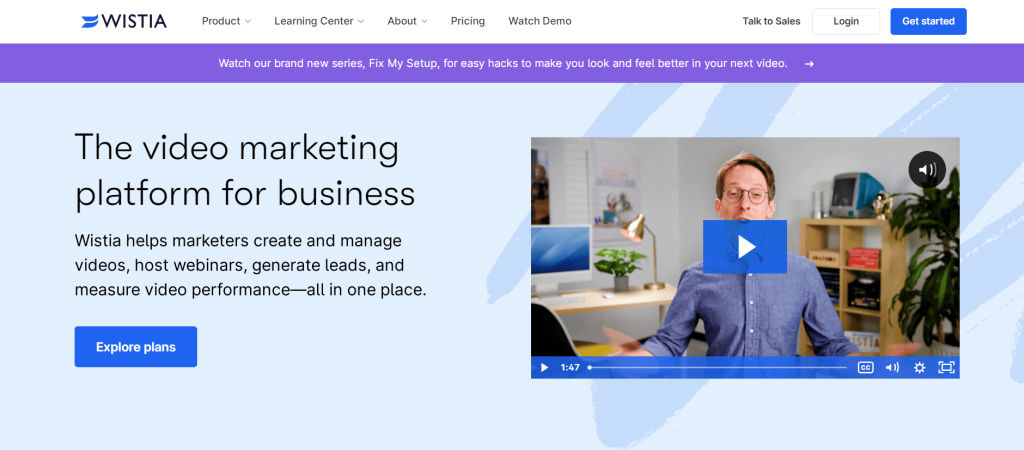
Pros:
- High-Quality Content: Wistia and Vimeo are renowned for hosting artistic, high-quality content, making them ideal for professional and polished video presentations.
- Customization: These platforms offer extensive customization options for the video player, allowing it to align seamlessly with your branding.
Cons:
- Smaller Audience: Wistia and Vimeo have a smaller user base compared to YouTube, which can impact the overall reach of your content.
- Paid Plans: Access to more advanced features and functionalities on these platforms often require a subscription to paid plans, which may be a consideration for budget-conscious users.
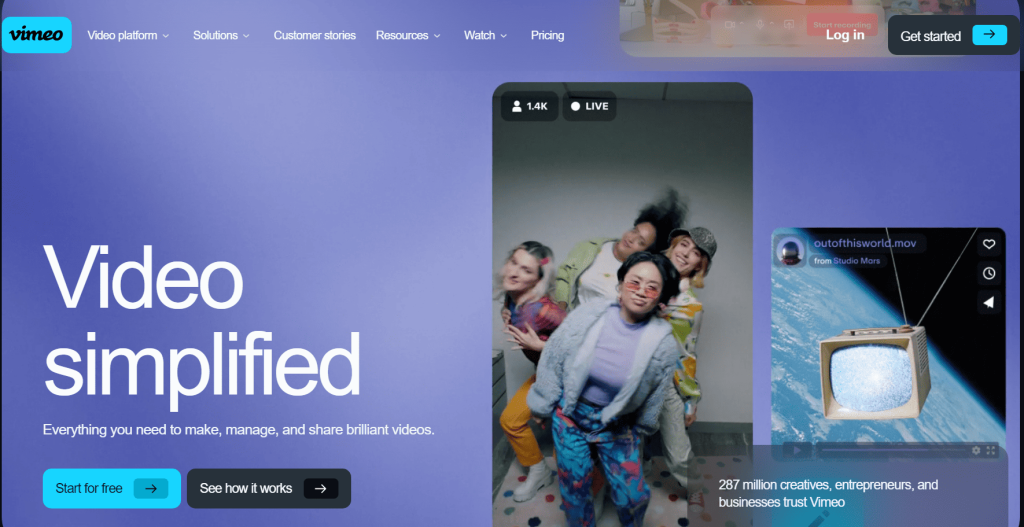
Self-Hosting
Pros:
- Total Control: Self-hosting gives you complete control over the hosting environment, allowing for full customization and branding of your video content.
- No Third-Party Advertising: When you self-host, you eliminate the risk of external ads appearing alongside your videos, ensuring a clean and uninterrupted viewer experience.
Cons:
- Technical Requirements: Self-hosting demands more technical resources and expertise, which can be a hurdle for those without a technical background.
- Limited Traffic and Reach: Without the built-in audience that established platforms like YouTube or Vimeo provide, achieving visibility and attracting traffic can be more challenging.
Optimize Video File Metadata
Optimizing your video file metadata, particularly the file name, is essential for improving your videos’ discoverability and search engine ranking. Using relevant keywords in file names is key to this optimization process.
Including specific, descriptive keywords in your video file names informs both viewers and search engines about the content of your videos. This relevance can enhance the likelihood of your videos appearing in pertinent search results, increasing visibility and attracting the right audience.
Moreover, a well-optimized file name is beneficial for users browsing through their local directories or media libraries, as it allows them to quickly understand the content of the video without needing to open it.
When selecting keywords for your file names, choose terms that accurately reflect the main topic, theme, or key points of your video. Aim for clarity and specificity, steering clear of vague or unrelated terms. Striking the right balance between detailed and concise naming can significantly influence your video’s search performance and online visibility.
Thus, when uploading a video, remember to optimize its file name with relevant keywords to enhance the chances of reaching and resonating with your target audience.
Creating a Compelling Thumbnail
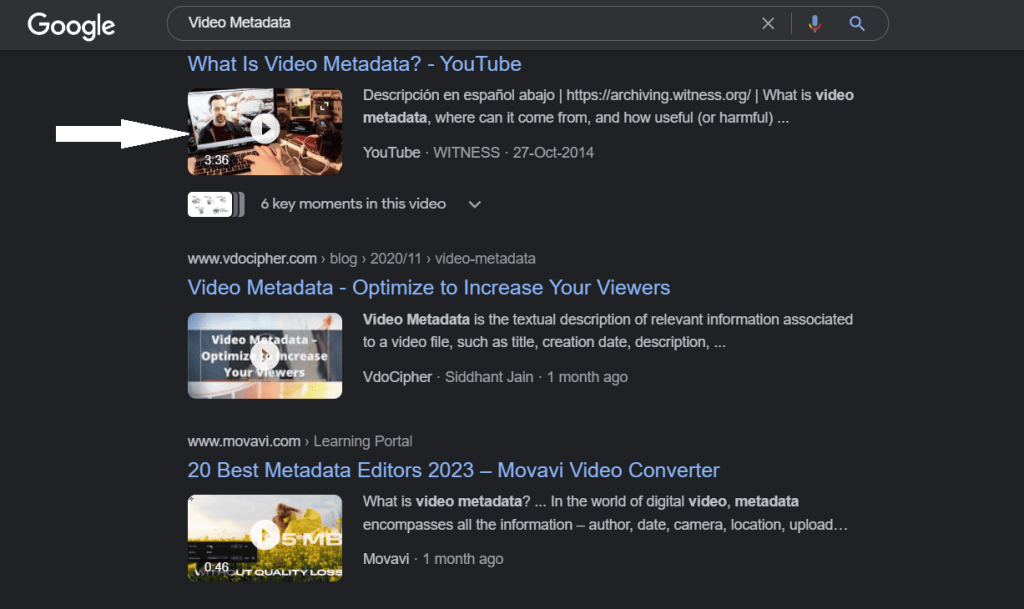
Video thumbnails are the small, clickable images that represent your videos. They play a critical role in attracting viewers, so give them the attention they deserve! When your video appears on a search engine results page (SERP), the thumbnail is the first thing people see.
First impressions are crucial. Don’t settle for a mundane screengrab; opt for a thumbnail that captures attention and encourages viewers to watch your video. Strive for excellence, not mediocrity!
When it comes to producing thumbnails, you have options. While a simple screengrab might suffice, consider creating a custom thumbnail for maximum impact. A custom thumbnail offers creative freedom to design something that stands out and aligns with your video’s topic.
Custom thumbnails can also reinforce your brand identity. Using consistent colors and fonts associated with your brand helps your audience instantly recognize your videos.
Here are some tips to enhance your thumbnails:
- Use Faces: People are naturally drawn to human faces. If appropriate, include images with faces in your thumbnails.
- Include Text Overlay: Add an enticing text overlay featuring the video’s title or a brief description. This can capture viewers’ attention and encourage them to click on your video.
Crafting an Effective Video Title and Description
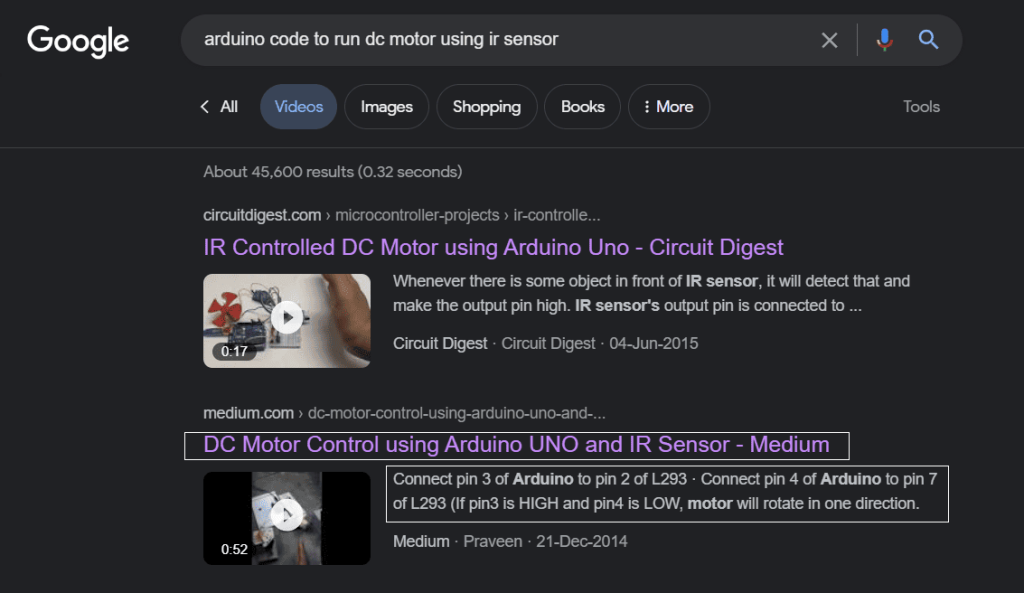
Before writing SEO-driven content for your video, conduct keyword research. Use terms that your target audience uses to search for related content. It’s like uncovering the ‘secret sauce’ to reach your audience.
Start with Google Trends, but don’t stop there. Explore other keyword research tools like YouTube Studio, Semrush, and Ahrefs. These tools can help identify the most suitable keywords for your video content.
Apply the same smart principles you use for SEO-optimizing blog posts or landing pages to craft catchy video titles and descriptions. Keep it engaging and clear, and include relevant keywords at the beginning. Aim to keep your title under 60 characters to prevent it from being truncated in search results. Ensure your hard work is fully visible!
In the video description, feel free to add detailed information and relevant keywords. Use this space to explain to viewers what your video is about, enhancing their understanding and interest.
Implementing Video Transcripts

Including video transcripts can significantly enhance your videos. Transcripts, or text captions displayed alongside the video, allow viewers to consume the content without sound, which can be particularly useful in various settings.
There are several advantages to video transcripts. First and foremost, they greatly improve accessibility, making your content inclusive for audiences who are deaf or hard of hearing. By providing a written version of the spoken content, you ensure that everyone can fully understand and enjoy your video.
Moreover, video transcripts play a crucial role in search engine optimization (SEO). Search engines use textual content to comprehend the context and relevance of videos during web crawling. By providing a transcript, you increase the likelihood of your video being correctly indexed and appearing in relevant search results.
Platforms like YouTube, Wistia, and Vimeo make it straightforward to add transcripts to your videos. By entering the transcript in the provided fields, you enhance the accessibility and discoverability of your videos. Adopting video transcripts is a proactive step towards making the internet more inclusive and user-friendly.
Tagging and Categorizing Your Video Properly
Proper tagging and categorizing of your videos are vital for optimizing them for video SEO and enhancing user experience. These practices significantly boost the visibility and discoverability of your videos.
Tags are keywords or phrases that describe your video’s content. They are used by search engines to match videos with users’ search queries on specific topics. Using relevant and accurate tags increases the likelihood of your video appearing in search results.
For effective tagging, choose keywords that are popular within your niche and directly relate to your video’s content. Avoid using misleading or irrelevant tags to maintain your video’s credibility and ranking.
Correct categorization of your content enhances the user experience on your video platform or channel. When your videos are properly categorized, it becomes easier for users to find the content they are interested in, which can increase engagement and watch time.
Search engines also consider the categories you assign when ranking your videos in search results. Accurate categorization helps search engines understand the context and subject matter of your videos, potentially leading to better visibility in relevant search queries.
By choosing precise categories that resonate with your video’s topic and your audience’s interests, you create a user-friendly platform. Accurate tagging and categorization are key components of successful video SEO, helping to enhance visibility, user experience, and online presence.
Also Read: 35 Best YouTube SEO Tools to Improve Your Youtube Rankings
Creating Engaging Content
Producing engaging video content is crucial for attracting and retaining viewers, improving search engine rankings, and ultimately increasing organic traffic to your website or platform. Engaging content captures viewers’ attention, encourages them to watch the entire video, and promotes social sharing, all of which enhance SEO performance.
User engagement is key to SEO for several reasons:
- Dwell Time: This metric is used by search engines to gauge how long users stay on your video. A longer dwell time suggests that the content is significant and relevant, improving its ranking in search results.
- Click-Through Rate (CTR): Compelling video thumbnails and titles can increase the likelihood of users clicking on your video in search results or suggested videos, thus boosting your CTR. A higher CTR signals to search engines that your content is engaging and deserves a higher ranking.
- Social Signals: Shareable videos are more likely to be circulated on social media, creating social signals. These signals, as indicators of content quality and relevance, can influence your SEO performance.
Tips for making your video content more engaging:
- Draw in Viewers Right Away: The first few seconds are crucial. Start with a strong statement or a thought-provoking question to capture interest.
- Deliver Value: Offer relevant, informative content that meets your audience’s needs or solves their problems. Valuable content keeps viewers engaged and more likely to continue watching.
- Storytelling: Use storytelling to make your message more relatable, memorable, and emotionally resonant.
- Visual Appeal: Invest in high-quality production and visuals. A visually attractive video is more likely to engage viewers.
- Keep It Concise: Focus on the key points and avoid rambling. Respect your audience’s time by communicating your message succinctly.
Encouraging Social Shares

Encouraging users to share your content on social media is vital. Social shares can enhance visibility, engagement, and brand awareness. While social shares indirectly influence SEO and website traffic, they inform search engines about the relevance and value of your content.
Factors that can aid SEO and positively impact social shares:
- Increased Visibility: As your content is shared on social media, it reaches a wider audience, potentially leading to more website traffic, backlinks, and mentions on other platforms.
- Better Brand Signals: Shares on social media can enhance your brand’s online authority and presence, which can have a slight yet tangible effect on search rankings.
- Indirect Link Building: High-quality content that garners many social shares is more likely to attract backlinks from other websites, a crucial ranking factor for search engines.
- User Interaction: Higher interaction rates from social media can lead to increased dwell time on your website, which may be favorably perceived by search engines.
After optimizing your video for SEO, the next step is effective distribution and promotion to reach your target audience. Here are some strategies for boosting video shares on social media platforms:
- Use Email Marketing: Incorporate your video in email marketing campaigns. Send personalized emails to your subscribers with teasers or previews of the video, including direct links for easy access.
- Share on Social Media: Leverage the power of social networks like LinkedIn, Facebook, and Twitter. Create captivating descriptions and use relevant hashtags to enhance visibility and drive traffic to your website.
- Use Video Sharing Sites: Post your video on popular platforms such as YouTube, Vimeo, and Dailymotion to broaden its reach. The vast user bases on these sites increase the likelihood of more people discovering and sharing your video.
- Collaborate With Influencers: Partner with influencers in your industry or niche to promote your video. Influencers can significantly expand your video’s reach and connect you with their engaged audience, enhancing your content’s credibility.
- Paid Promotion: Consider investing in paid advertising on platforms like Google AdWords, Facebook Ads, or Instagram Ads. Targeted ads can expose your video to a broader and more engaged audience, increasing the likelihood of shares.
- Optimize Video Length: Tailor your video’s length to be concise and impactful. Shorter videos tend to perform better on social media, maintaining viewers’ attention and facilitating sharing.
- Add Captions and Subtitles: Enhance accessibility and viewing experience by adding captions and subtitles. This makes your content shareable even in silent mode.
- Cross-Promote Across Platforms: Share your video across various social media channels, leveraging each platform’s unique features to increase visibility and reach.
- Use Hashtags Carefully: Identify relevant and trending hashtags for your video posts. Hashtags enhance visibility and encourage sharing among users interested in the topic.
- Run Competitions and Giveaways: Encourage engagement and sharing by organizing contests or giveaways. People are more likely to share content when incentivized with potential rewards.
- Engage Your Audience: Respond to comments on your video posts. Building a sense of community and interacting with your audience leads to increased satisfaction and sharing.
Embedding Videos on Your Site
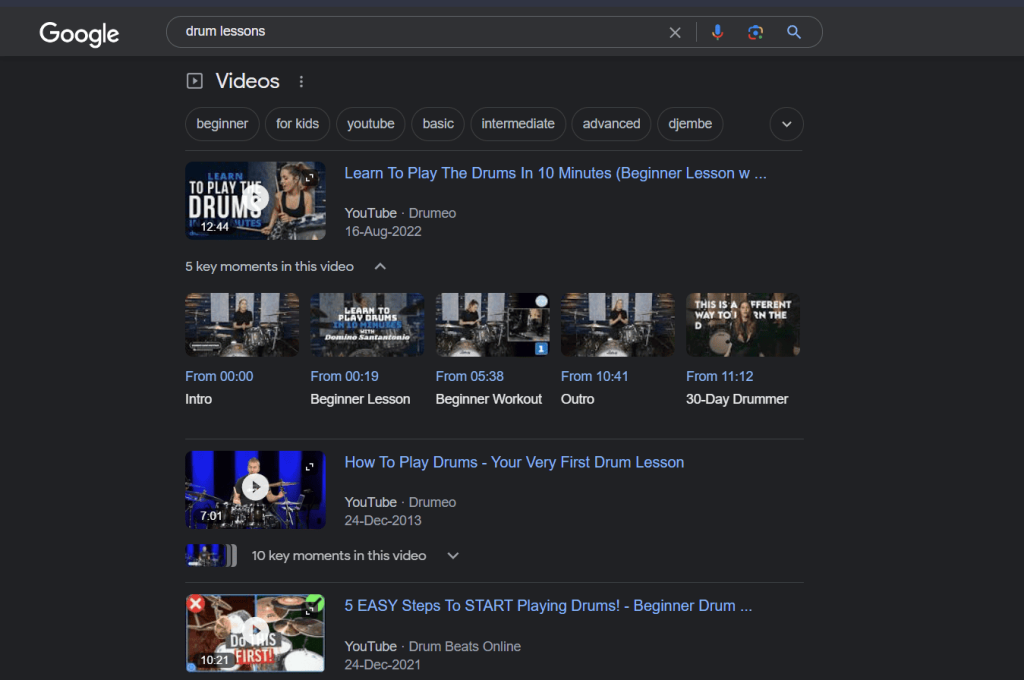
Embedding videos on your website can enhance your content and engage your audience with dynamic multimedia. However, follow these best practices for a smooth user experience and optimized loading times:
- Use a Widely Supported Video Format: Opt for formats like MP4 (H.264 codec) or WebM (VP9 codec) for broad browser and device compatibility.
- Compress Videos Without Losing Quality: Balance video resolution and size to reduce loading times without compromising quality.
- Ensure Responsiveness: Make sure your video player adjusts seamlessly to different screen sizes and orientations for a consistent experience across desktop and mobile devices.
- Consider Lazy Loading: Load videos only as users scroll down to them, speeding up initial page load times.
- Utilize Streaming Services: Platforms like YouTube, Vimeo, or Wistia can optimize delivery and loading times, reducing the load on your server.
- Use Optimized Thumbnails: Choose eye-catching thumbnails to encourage views while keeping file sizes low.
- Use Autoplay Sparingly: If using autoplay, mute the video by default to avoid disrupting the user experience.
- Customize Video Player: Consider a custom player that aligns with your site’s design while remaining fast and lightweight.
- Publish a Video Sitemap: Increase your video content’s visibility by submitting a sitemap to search engines.
- Leverage CDNs: Use Content Delivery Networks to distribute your video content across multiple servers for faster loading.
- Monitor Performance Metrics: Track play rate, engagement, and user behavior to continuously improve your video strategy and enhance viewer satisfaction.
Mobile Optimization
Mobile optimization involves tailoring websites, apps, and media to be user-friendly and visually appealing on mobile devices. Given the rising use of smartphones and tablets, it’s crucial for businesses and content creators to provide a seamless and engaging user experience for their mobile audience.
To ensure a smooth and high-quality viewing experience on mobile devices, using mobile-friendly video formats is key. Mobile screens vary in size, quality, and processing capabilities compared to desktop screens, making traditional video formats potentially unsuitable. Mobile-friendly video formats offer better compatibility, faster loading times, and reduced data consumption, allowing users to enjoy videos on the go without interruptions.
Tips for Ensuring Videos Play Smoothly on Mobile Devices:
- Use Video Formats That Are Specifically Optimized for Mobile Devices: Utilize mobile-optimized formats like MP4 with H.264 encoding. These formats ensure broad compatibility across different mobile devices and operating systems.
- Consider Adaptive Bitrate Streaming: Implement adaptive bitrate streaming, which adjusts video quality based on the user’s internet speed, ensuring smooth playback across varying network conditions.
- Optimize Video Resolution and Size: Tailor video resolution and size for typical mobile screen sizes and internet speeds. Compress videos to reduce loading times and bandwidth usage without losing quality.
- Responsive Design: Employ responsive video players that automatically adjust to different screen sizes and orientations for an optimal viewing experience.
- Video Controls and Interaction: Ensure that playback controls like play, pause, and volume are easily usable on touchscreens. Incorporate interactive elements like captions and clickable buttons to engage mobile users.
- Testing on Multiple Devices: Regularly test your videos on a variety of mobile devices and operating systems to identify any performance or compatibility issues.
- Page Load Performance: Improve overall page performance using caching, image optimization, and script minimization for faster loading times.
- Battery Consumption: Optimize videos to minimize battery drain during playback.
- Bandwidth Detection: Detect users’ bandwidth and network conditions to deliver appropriate video quality and avoid playback issues.
By implementing these mobile optimization strategies, content creators and businesses can ensure their videos are accessible, engaging, and enjoyable for mobile viewers, leading to improved viewer satisfaction and expanded reach.
Building Backlinks to Your Video
Building backlinks to your video is a key component of video SEO, enhancing visibility, credibility, and search rankings. Create high-quality, compelling content that naturally encourages backlinks from other websites, social media, and influencers. Promote your video through outreach efforts, guest posting, and forming partnerships to expand your reach and acquire essential links.
High-quality backlinks are vital in video SEO. They signal to search engines the trustworthiness and relevance of your content, improving your position in search results. Backlinks not only boost audience engagement but also build credibility by directing targeted traffic to your site. They also facilitate faster indexing, ensuring quicker visibility in search results.
In summary, backlinks play a pivotal role in the success of video SEO. By creating and promoting high-quality content, you can enhance the visibility, authority, and overall SEO performance of your video.
Monitoring Video Performance
After investing time and effort in preparing your video for SEO, monitoring its performance is essential. Various methods can provide valuable insights into how your video is performing.
Analytics from Video Hosting Platforms: Most video hosting platforms offer analytics, providing crucial data like view count, watch duration, and viewer engagement. This information can help assess your video’s effectiveness and guide any necessary strategy adjustments.
Keyword Performance: Reflect on the keywords targeted in your video SEO strategy and monitor their rankings in search results. This will indicate your video’s SEO performance, allowing you to refine your optimization tactics if you notice fluctuations.
Referral Traffic: Check the referral traffic from your video hosting platform to your website. This data shows the amount of traffic your video directs to your site, offering insight into the effectiveness of your video marketing campaigns.
Conversion Rates: Using analytics tools, track the number of viewers who come to your website through your video and take a desired action, like making a purchase or signing up. This information is invaluable for understanding how your video marketing contributes to conversions and sales.
Conclusion
Mastering video optimization is a crucial component of an effective video marketing strategy. Enhancing your videos’ search engine presence can lead to increased views, engagement, and conversions. Start with thorough keyword research and audience understanding.
Pay close attention to the title, description, and tags to ensure they resonate with your audience’s search habits. Don’t overlook technical aspects like a video sitemap and choosing the right hosting platforms for optimal search engine performance.
Enhance your video’s appeal by optimizing thumbnails and transcripts. Employ SEO best practices, distribute across various platforms, and measure performance using analytics. Prioritizing video SEO is key to enhancing online presence and driving business success.
FAQs
What is video content optimization for search?
Video content optimization for search involves making your videos more visible and discoverable on search engines like Google and YouTube. It entails using strategies and best practices to improve your videos’ search rankings, increasing the likelihood that your target audience will find and view your content.
Why is video content optimization important?
Video content optimization is crucial as it maximizes the visibility of your videos. Optimizing your videos for search enhances their discoverability, drawing more viewers and expanding your online presence and engagement.
How can I conduct keyword research for optimizing video content?
Keyword research can be done using tools like Google’s Keyword Planner, YouTube’s Search Suggest, and third-party tools such as SEMrush or Ahrefs. Look for high-search-volume keywords that are relevant to your video content and have relatively low competition.
What are the best methods for creating catchy video titles?
Effective video titles are clear, concise, and engaging. Incorporate your target keywords naturally and keep titles within a reasonable character limit for optimal display in search results. Strive to make titles click-worthy while accurately reflecting the video’s content.
What function do tags and metadata play in optimizing video content?
Tags and metadata provide additional information about your video to search engines. Use relevant tags that accurately describe your video’s content and theme to help search engines understand and rank your video in related searches.
Does video engagement have an impact on search rankings?
Yes, video engagement metrics like view duration, likes, comments, and shares can influence search rankings. Search engines often favor videos with higher engagement, indicating that the content is valuable and appealing to viewers.
























